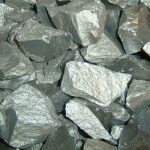Hybrid Cooling tower
- articles
- Hybrid Cooling tower

- admin
- August 3, 2020
- No Comments
Hybrid Cooling tower
How can we reduce cooling tower water consumption?
What is the way to save water in the cooling tower?
Is the cooling system suitable for dry areas?
Is it possible to reuse the steam from the cooling tower?
What is the reduction in water consumption in the hybrid cooling tower?
What is the price of hybrid cooling?
The answers to these questions are all related to the concept of the hybrid cooling tower. For this reason, in this article, we tried to provide suitable technical and economic explanations about low-consumption hybrid and air-cooled cooling towers.
What does hybrid mean?
It is better to get more familiar with the concept of hybrid first of all. Hybrid in the word means combining two or more methods or different approaches, with the aim of improving the overall efficiency and performance of the set and taking advantage of the advantages of each method. For example, a hybrid car is a combination of an internal combustion engine and a battery. By combining these two methods, a hybrid vehicle can travel a greater distance than gasoline or electric variants, while producing much lower emissions.
In the cooling tower, the hybrid method reduces cooling water consumption by combining two modes of air cooling and water cooling
In general, cooling towers are divided into three groups according to how they cool water:
Dry cooling tower
Cooler or wet cooling tower
Hybrid cooling tower
________________________________________
- Dry cooling tower
Heller Concrete Power Plant Cooling Tower (Dry Cooling Tower)
This type of cooling tower works only with air circulation and water evaporation has no effect on their cooling process. A remarkable example of this group can be seen in the cooling system of the power plant. In this type of cooling tower, the water passes through the radiator in the lower part of the body, and the pressure difference between the upper opening of the cooling tower and the lower part causes air flow and cooling of the fluid (water) inside the radiator. Of course, in some examples of this type of cooling tower, a fan is also used to increase the intensity of the air flow. It should be noted that the concrete conical shape of a power plant cooling tower is not the reason for their dryness, and in some cases these types of cooling towers use water for cooling, which can be understood from the steam released from the top of the cooling tower. The problem of this type of cooling towers is the limitation in reducing the fluid temperature and the high temperature of the outlet water in the summer. For example, if you want to increase the temperature of the cooling water from 40 degrees to 30 degrees Celsius, it is not possible to use the air cooling system in most cities.
– Cooler tower (wet)
Wet cooling tower
In this type of cooling towers, after spraying through the nozzles into the device, the cooling water drops in temperature due to surface evaporation. It should be kept in mind that the cooling tower is the most common type of cooling tower and is used in most industries. The advantage of using cool water cooling is the significant reduction in cooling water temperature and their lower electricity consumption. Note that in general, when talking about a cooling tower, it means a wet cooling tower.
Hybrid cooling tower (low consumption cooling tower)
Hybrid Cooling Tower
A hybrid cooling tower is a combination of a dry cooling tower and a cooling water cooling tower, which uses water evaporation during peak heat, and ambient air in other cases to cool the system.
The main advantage of the hybrid cooling tower is the significant reduction of the average annual water consumption. By using a hybrid cooling tower, you can save between 40 and 80%, on average, in the supply of make-up water.
Of course, the hybrid cooling tower has a higher initial construction cost, and at the same time, its dimensions are larger than closed circuit and open circuit cooling towers.
The method of reducing water consumption in the hybrid cooling tower is that the fluid or water that needs to be cooled first enters the upper part of the cooling tower (air-cooled coil). In this section, the desired water or fluid is cooled to some extent in the coils and by the ambient air. This stage of temperature reduction in many seasons of the year helps to significantly reduce the percentage of cooling required by evaporation.
After the water passes through the air exchanger, the fluid is transferred to the lower part of the hybrid cooling tower and is sprayed on the packing by the nozzle. Finally, until the fluid temperature reaches the ideal temperature, surface evaporation will cool the water.
A very important point in hybrid cooling towers is that in the autumn, winter and spring seasons, a significant percentage of heat transfer and cooling is done by the air cooling system, and for this reason, the annual water consumption of Hybrid Cooling tower is lower than other models. Cooling tower is less
The need for less water makes the hybrid cooling tower a suitable option for relatively dry areas where water supply is very difficult. In fact, the low-consumption hybrid cooling tower controls the amount of water evaporation and lowers the temperature of the cooling water as much as possible using the air cooling system. The production and construction of a hybrid cooling tower requires familiarity with fluid mechanics and heat transfer, and it is very important to carry out simulation and preliminary calculations.
________________________________________
What temperature and conditions is the hybrid cooling tower suitable for?
This is a key and very important question in the Feasibility study of cooling tower. Hybrid cooling is most efficient when the temperature difference between the inlet and outlet is large, i.e. the range and the approach value. For example, if the inlet temperature of the tower is 50 degrees, the desired outlet temperature is 35 degrees and the wet bulb is about 20 degrees, the conditions are suitable for using Hybrid cooling tower.
But in another example, if the inlet water temperature to the cooling tower is 35 degrees, the outlet water temperature is 29.5 degrees Celsius, and the bubble temperature is around 25 degrees, the use of hybrid cooling is not economically justified and there is no significant saving in water consumption.
For this reason, it is better to prepare a feasibility and needs assessment plan for the use of a hybrid cooling tower with the cooperation of a consultant and see if the hybrid tower is suitable for your intended use or not.
The amount of water saving needed in hybrid cooling
The main purpose of the construction of the Hybrid cooling tower is to reduce the annual water consumption. But some consultants and contractors exaggerate the amount of water consumption reduction of the hybrid system to attract more customers. The fact is that, the amount of water consumption saving in Hybrid cooling tower will be between 40 and 80 percent in one year. The exact changes in reducing the water consumption of the double cooling tower are calculated according to the temperature of the inlet and outlet water and the wet bulb.
________________________________________
What is the maximum amount of water saving in a hybrid cooling tower and how is it done?
To reduce water consumption in hybrid cooling towers, numbers between 40 and 80 percent are usually expressed. Of course, this is the amount of savings in the average annual water consumption. If your operating conditions are such that you need to reduce water consumption by more than 50%, it is no longer possible to use the normal hybrid system. Our suggestion in this situation is to use the combined hybrid system, which provides the possibility of saving more than 50% of water throughout the year.
Different types of hybrid cooling towers
The hybrid tower can be divided into three different categories. These three categories are classified according to how the cooling tower works. The cheapest type, which has the least amount of water consumption, is the open circuit hybrid cooling system. In this model, the upper part of the tower has a number of cool air coils, which after the water passes through them, is finally sprayed on the fillings. The reduction of water consumption in this system (open circuit hybrid) is between 20 and 40% compared to the average annual consumption.
The second type of hybrid cooling tower is closed circuit. In this model of the cooling tower, the water after passing through the air-cooled coil enters the water-cooled coils on which water will be sprinkled. This type of cooling tower saves water consumption between 30 and 50 percent.
The newest and most complete type of hybrid cooling is the adiabatic cooling tower, which can reduce the average annual water consumption by about 80%. This system will be suitable for projects that are implemented in dry areas.
________________________________________
Steam recovery from the cooling tower with MolecularRecovery from imagination to reality
Important explanation: Recently, with increasing attention to the field of water management, many companies have started studying methods of reducing water consumption, and among them, some have claimed that by trapping water droplets, cooling tower water can be used. reduced Regarding this claim, it is enough to first refer to similar examples of this method in the world, that there is almost no operational and economic example of the cooling tower water recycling device that is attached to the fan stack in the world. The reason for this problem is the very low percentage of suspended droplets in water vapor, which is very small compared to evaporated water (0.003 to 0.0001 of circulating water).
At the same time, when water turns into vapor and enters the gas phase by taking heat from the environment, it cannot be returned to liquid state by filtering the water vapor, and it can only be cooled by re-cooling the vapor. Turn it into water. In this case, the energy required to cool and condense the steam is equal to the amount of heat that the cooling tower has taken from the water in the system, and if we want to cool the steam again, the cooling tower system will not work, and it would be better to First, a chiller was used.
Paying attention to these points helps to have a proper argument against the illogical claims about trapping water vapor with a molecular sieve and returning it to the cooling tower without spending energy.
We emphasize again that the most appropriate and common way to reduce cooling tower water consumption is to use a hybrid cooling tower with an intelligent system.

Latest Articles
Sustainable supply chain
- 3 August 2020
- No Comments
Application of all kinds of ferroalloys
- 3 August 2020
- No Comments
Reframertiub and its applications
- 3 August 2020
- No Comments
Category Articles
Latest projects
Sustainable supply chain
- 3 August 2020
- No Comments
Application of all kinds of ferroalloys
- 3 August 2020
- No Comments
Reframertiub and its applications
- 3 August 2020
- No Comments




